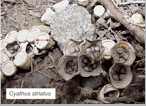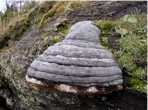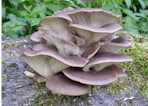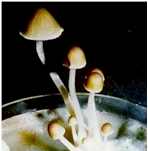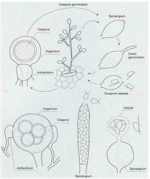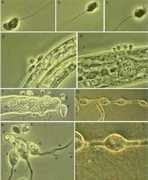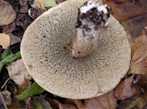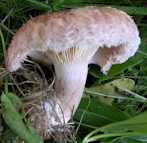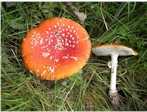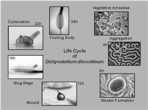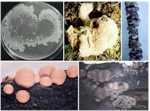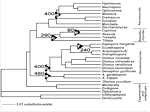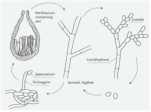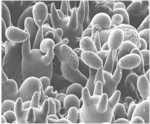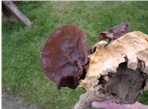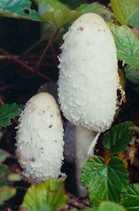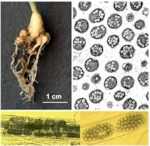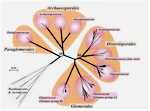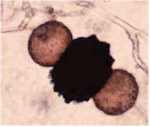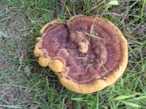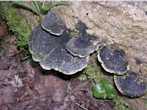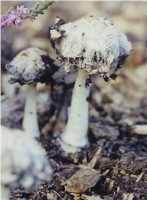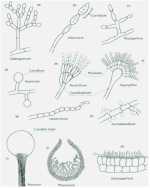..
CHAPTER 2: THE DIVERSITY OF FUNGI AND FUNGUS-LIKE ORGANISMS
Chapter 2 covers the following major topics: Overview of the
fungi and fungus-like organisms
--------------------------------------------------------- This chapter focuses on the major groups of fungi and fungus-like organisms, covering the whole span of fungal diversity in its broadest sense. Selected examples are used to illustrate key features of the fungal groups, and their biological significance. There will be some surprises in store. For example, we will see that some of the most devastating plant pathogens are not fungi at all, but belong to an entirely separate kingdom. We will see that some of the organisms once considered to be among the most ‘primitive’ – the microsporidia, trichomonads and diplomonads (see Chapter 1, Fig. 1.1) – are derived from fungi by the loss of features such as mitochondria, which they once possessed. We will also see how the development of molecular methods for determining the relationships between organisms has enhanced our understanding of fungi in many respects, but there is still no consensus on the best way to construct phylogenetic trees. OVERVIEW OF THE FUNGI AND FUNGUS-LIKE ORGANISMS Table 2.1 (below) shows all the fungi and fungus-like organisms that are currently considered to be fungi in the broadest sense. The vast majority are true fungi, sometimes termed Eumycota (eu = ‘true’). Until recently, all the true fungi were assigned to four phyla – Chytridiomycota, Zygomycota, Ascomycota and Basidiomycota. But in 2001, a fifth phylum was erected – the Glomeromycota (arbuscular mycorrhizal fungi and their relatives). These had previously been included in the Zygomycota. In Chapter 1, we noted that the Glomeromycota were associated with the earliest land plants (Schuessler, Schwarzott & Walker, 2001) and are still associated with the vast majority of plants today. Within the Kingdom Fungi, the Ascomycota and the Basidiomycota have many features in common, pointing clearly to a common ancestry. The phylum Chytridiomycota has traditionally been characterised on the basis of motile cells with a single posterior flagellum. This phylum was redefined recently, based on sequence analysis of the nuclear genes encoding small sub-unit (SSU) ribosomal RNA (18S rDNA). This has revealed that some non-motile fungi, previously assigned to the Zygomycota, are closely related to the Chytridiomycota and must be reassigned. An example is the fungus Basidiobolus ranarum ( Chapter 4), now transferred to the Chytridiomycota. The status of Zygomycota (as currently defined after excluding the Glomeromycota) is still unclear. Some of its members may need to be separated into new groups. Nevertheless, the current view is that all organisms within the Kingdom Fungi constitute a monophyletic group (all being derived from a common ancestor, and sharing several features with animals (Chapter 1; see Table 1.1). Gene sequence analyses provide the basis for a natural phylogeny, especially when data for the SSU rDNA are supported by sequence analysis of other gene families, such as the tubulin and actin genes. Table 2.1. The several types of organism that constitute the Fungi in a broad sense
_______________________________
|
|||||||||||||||||||||||||






